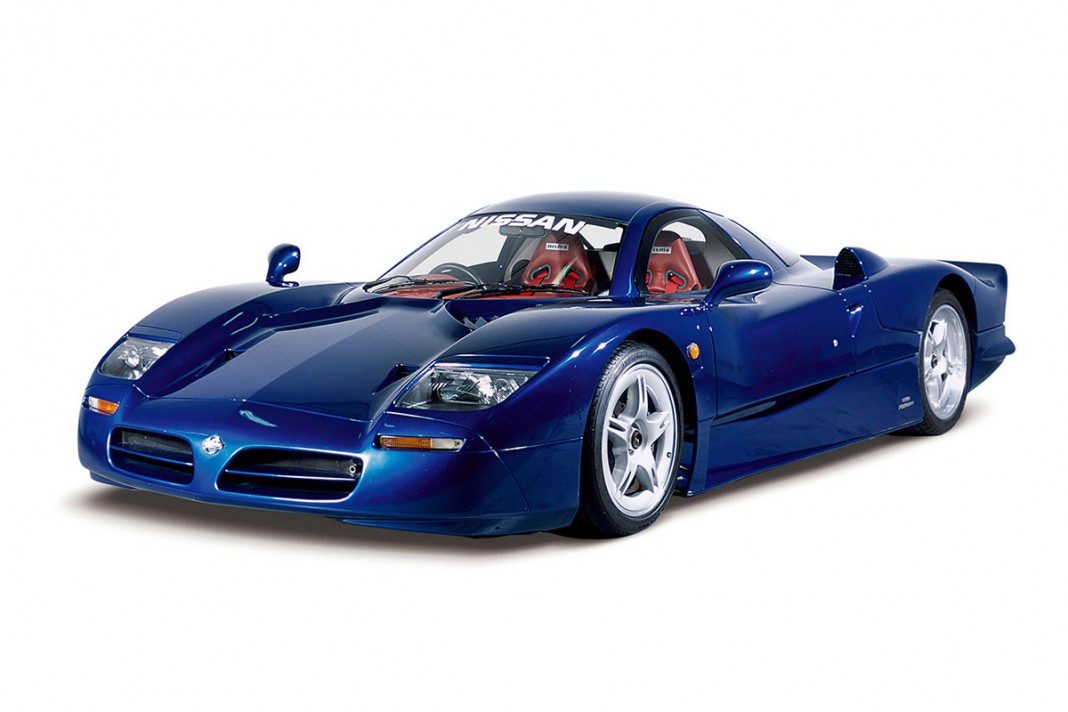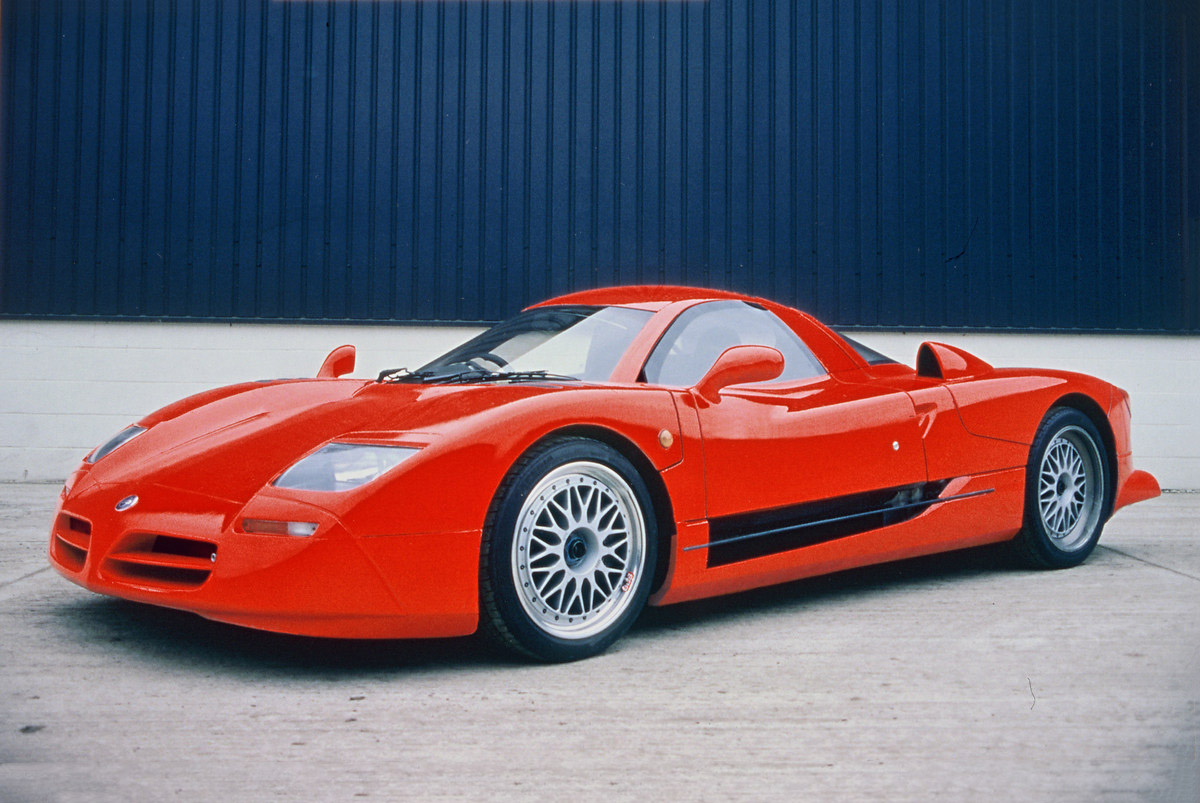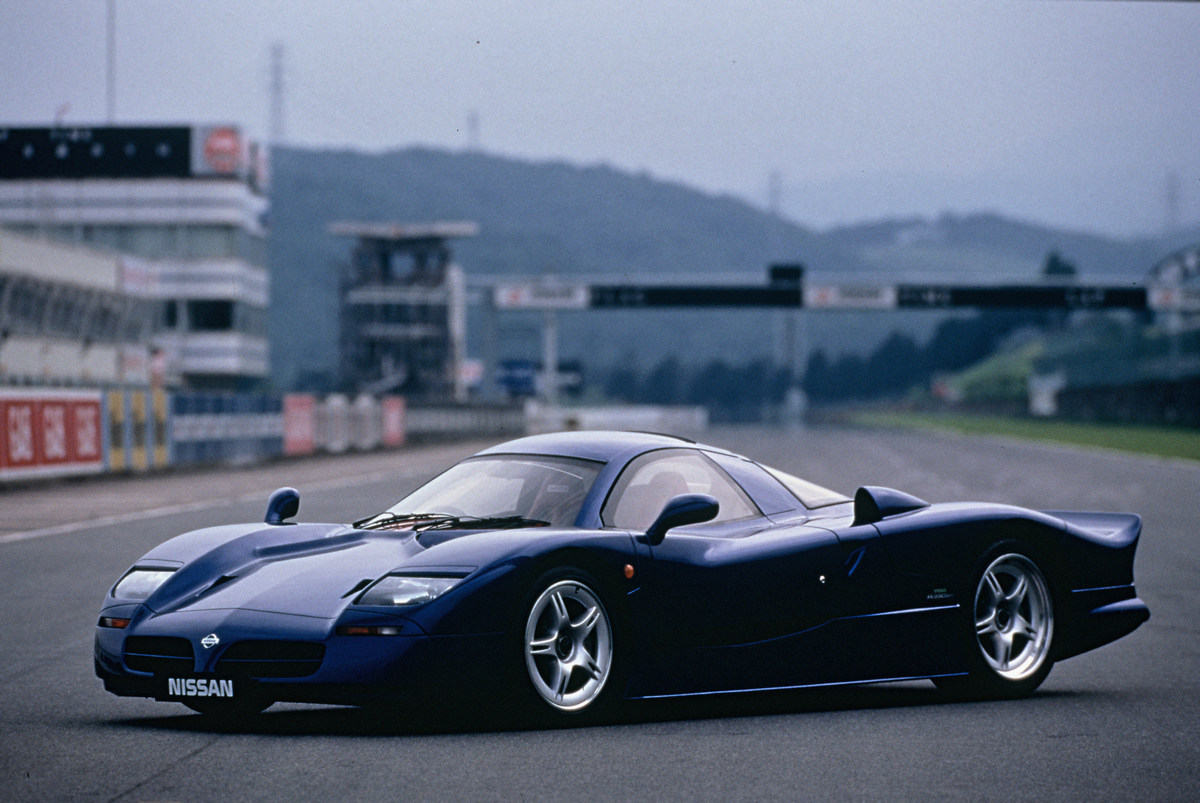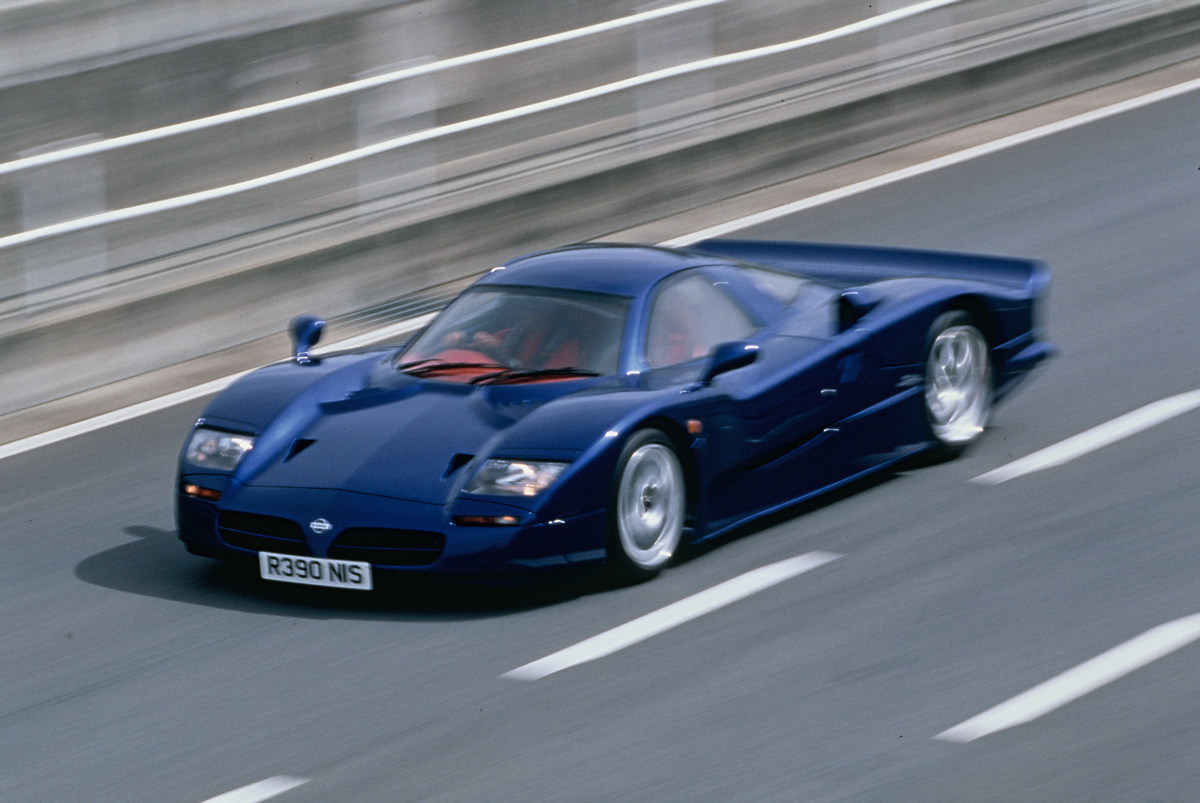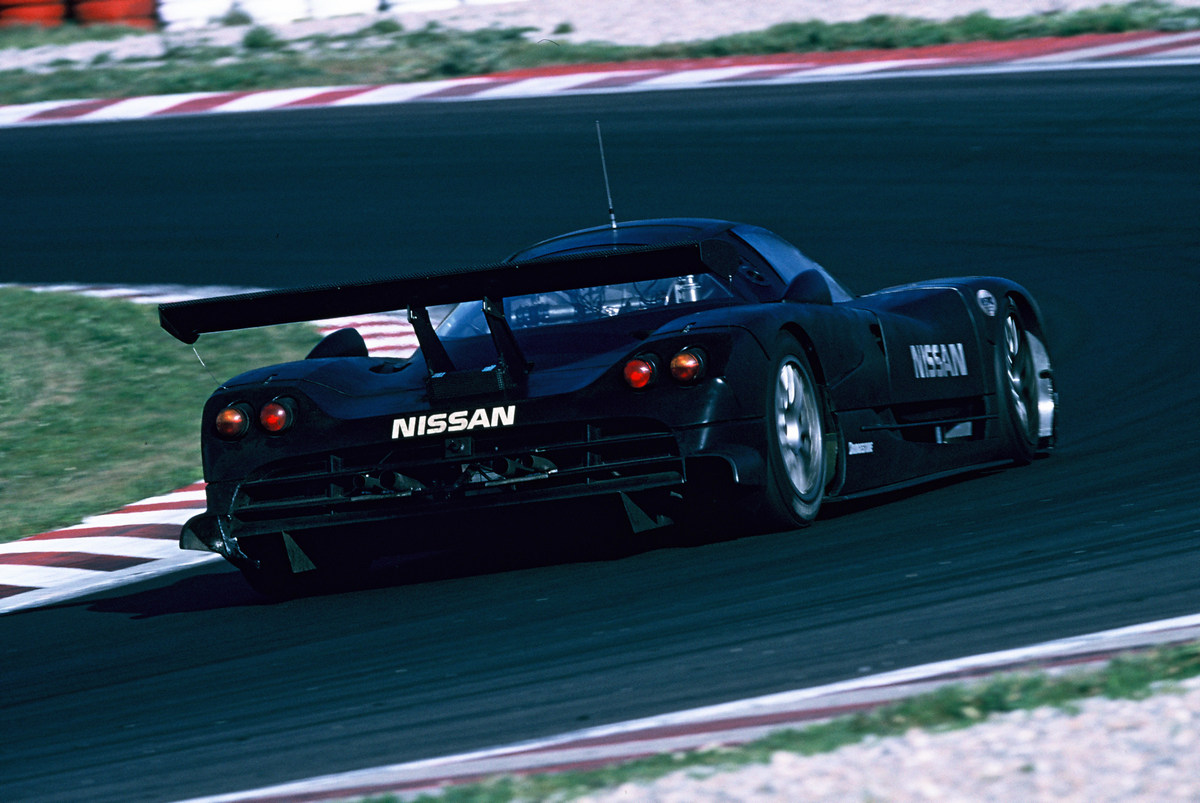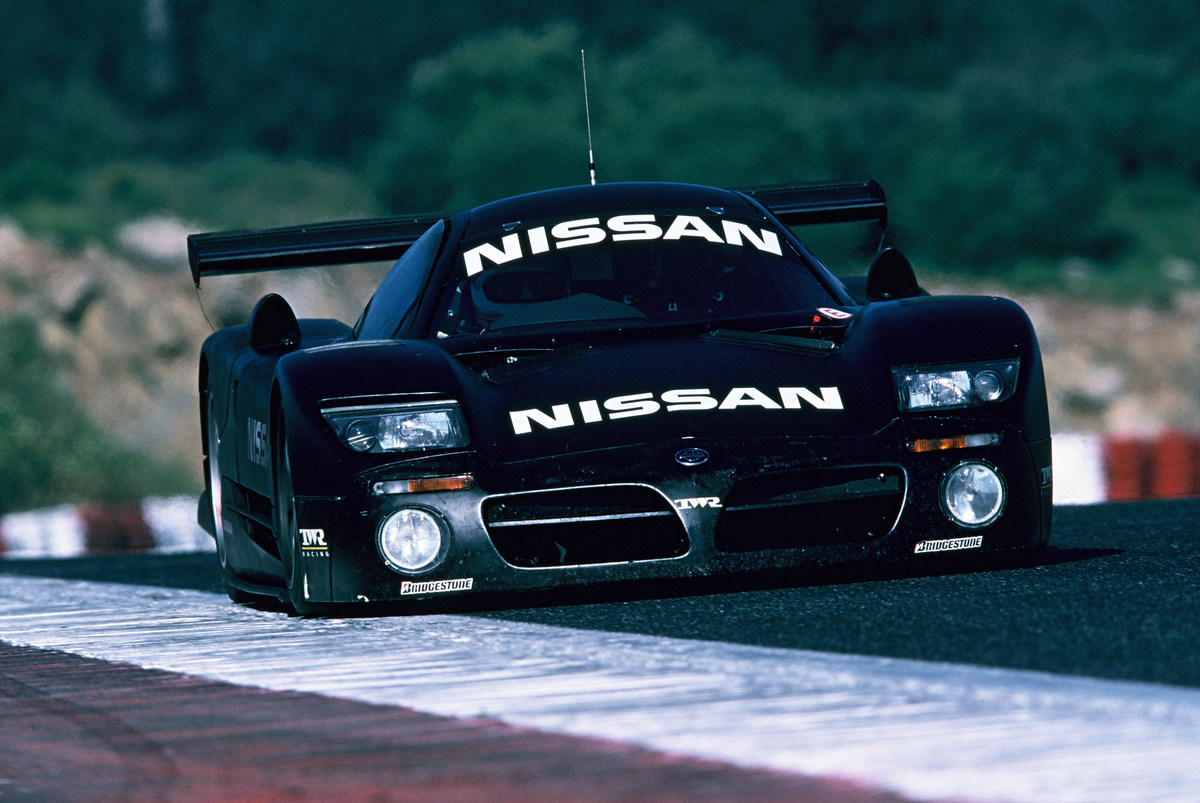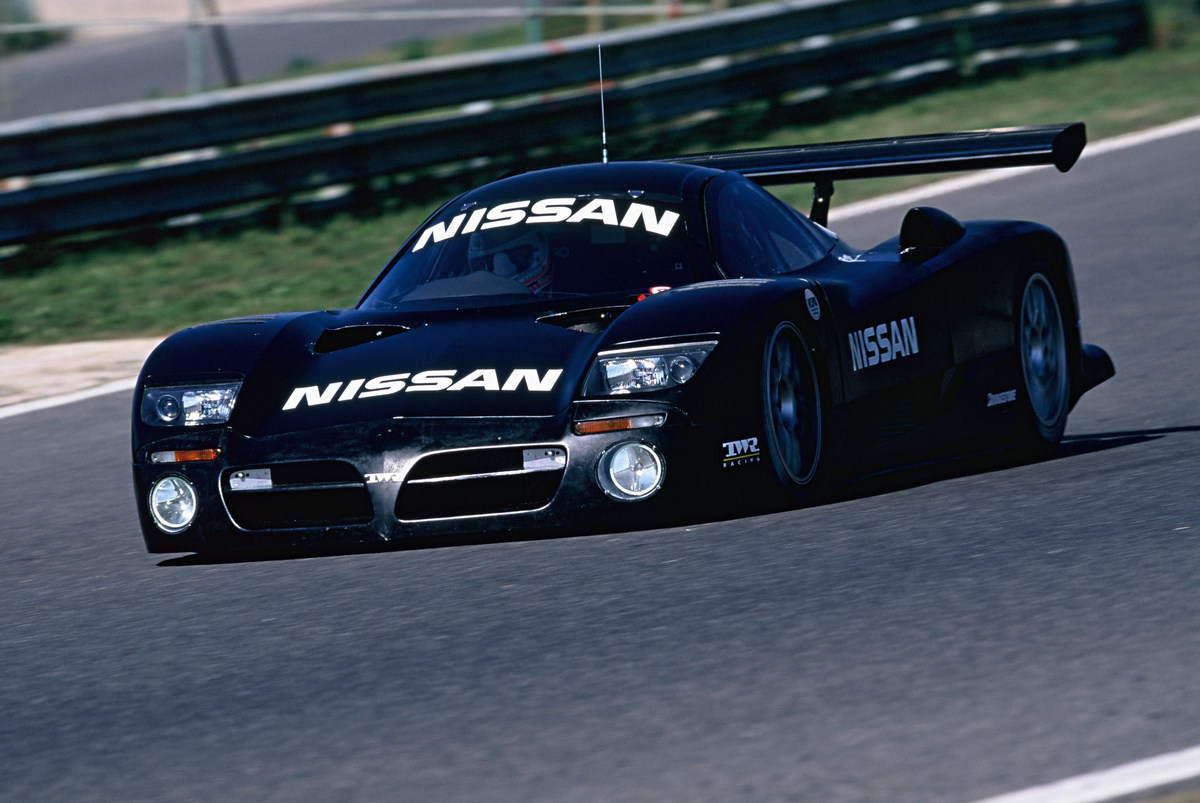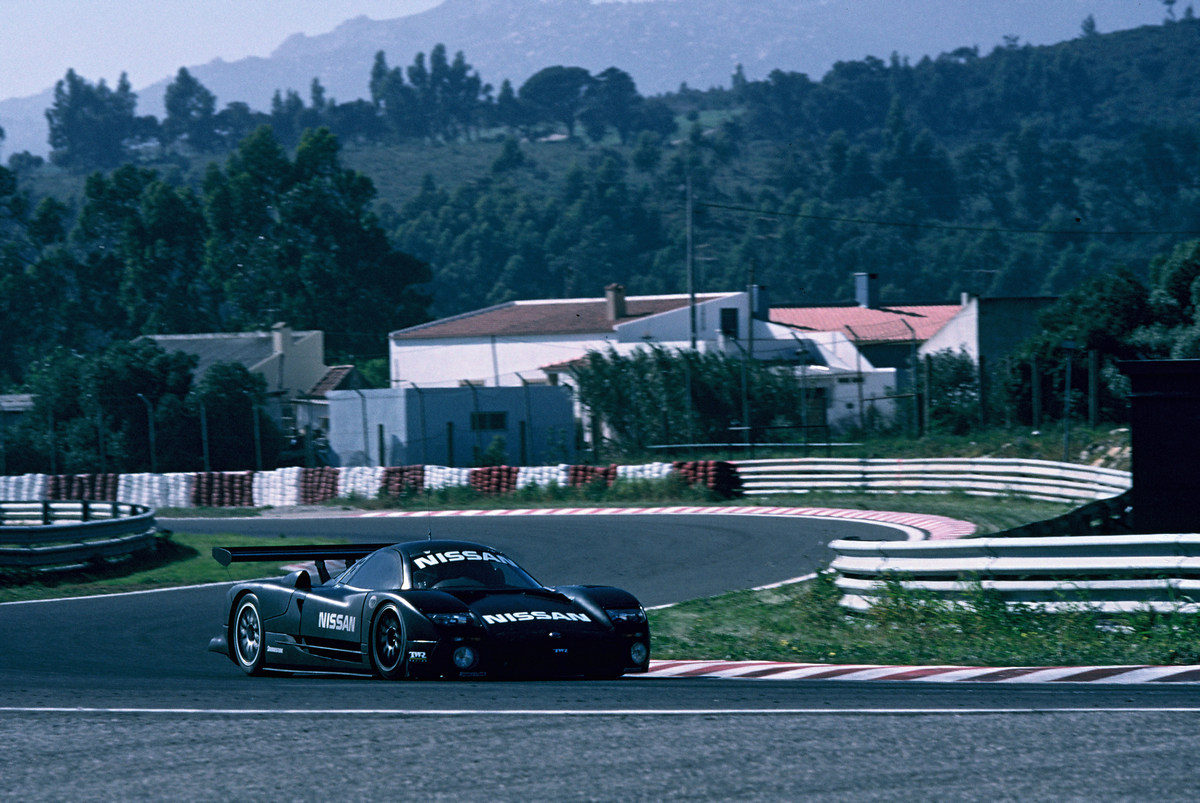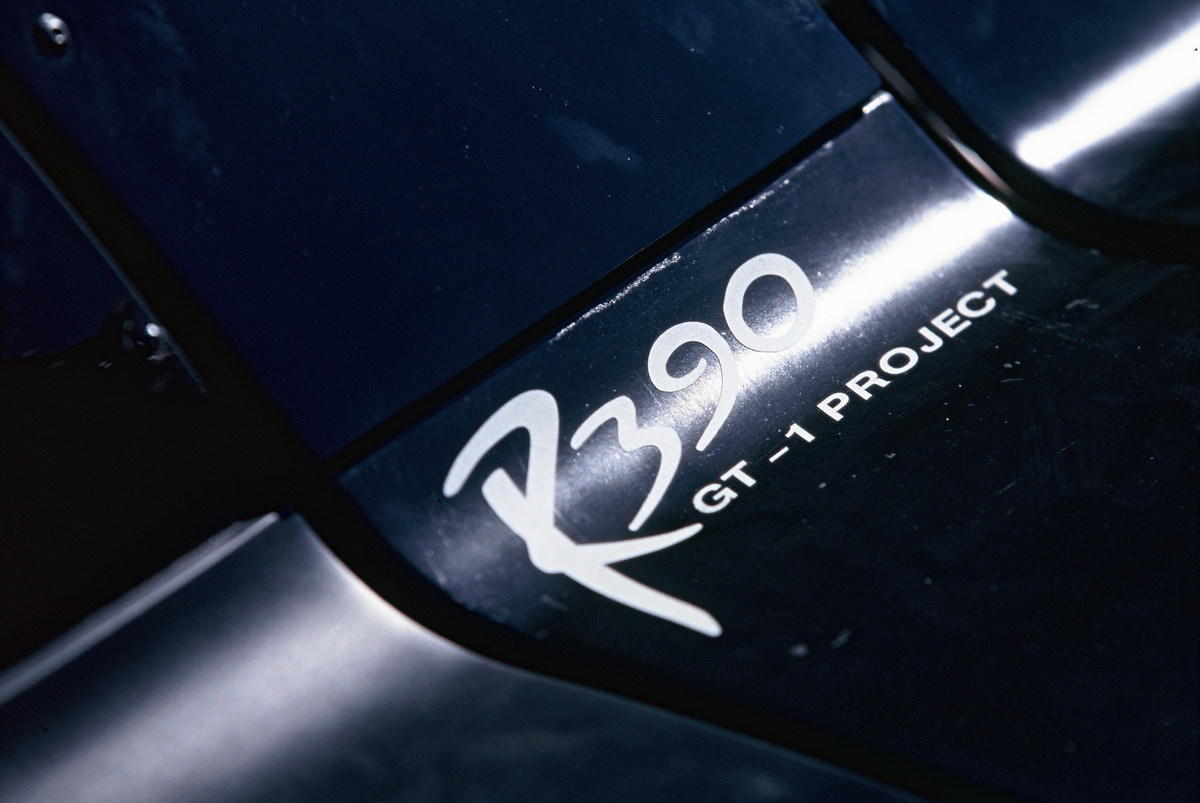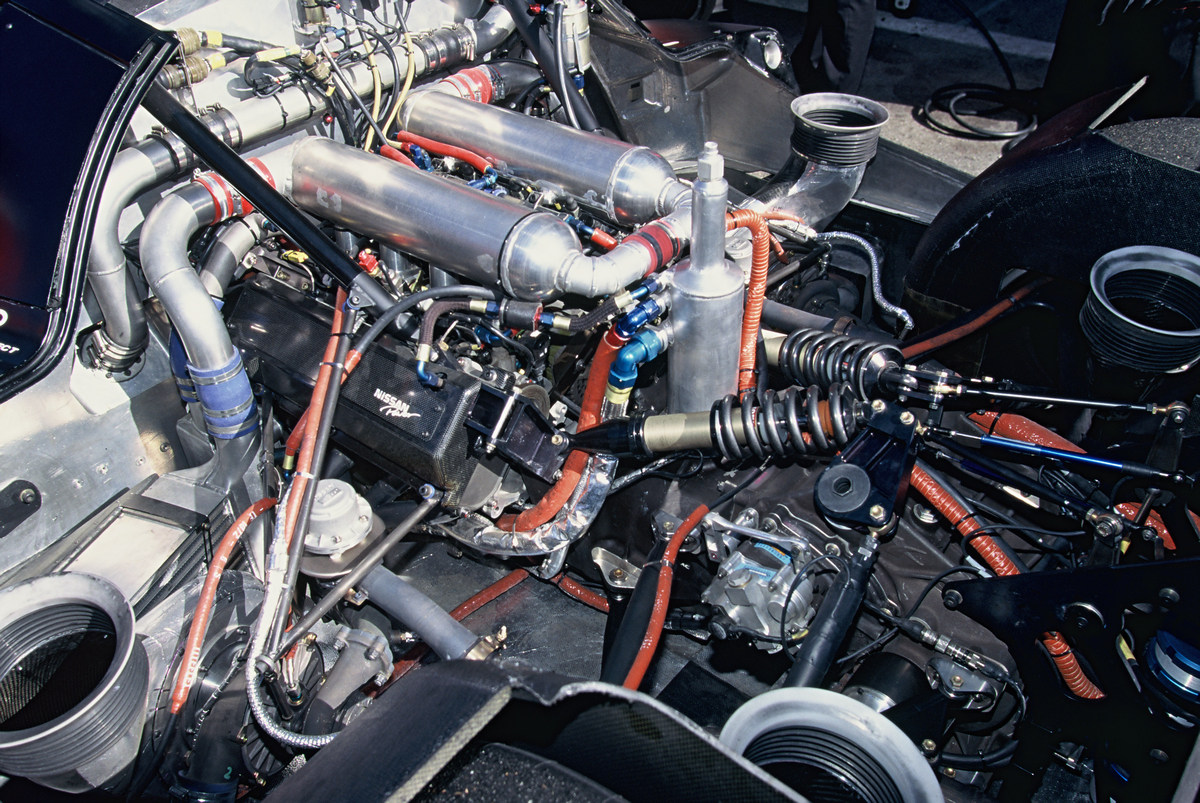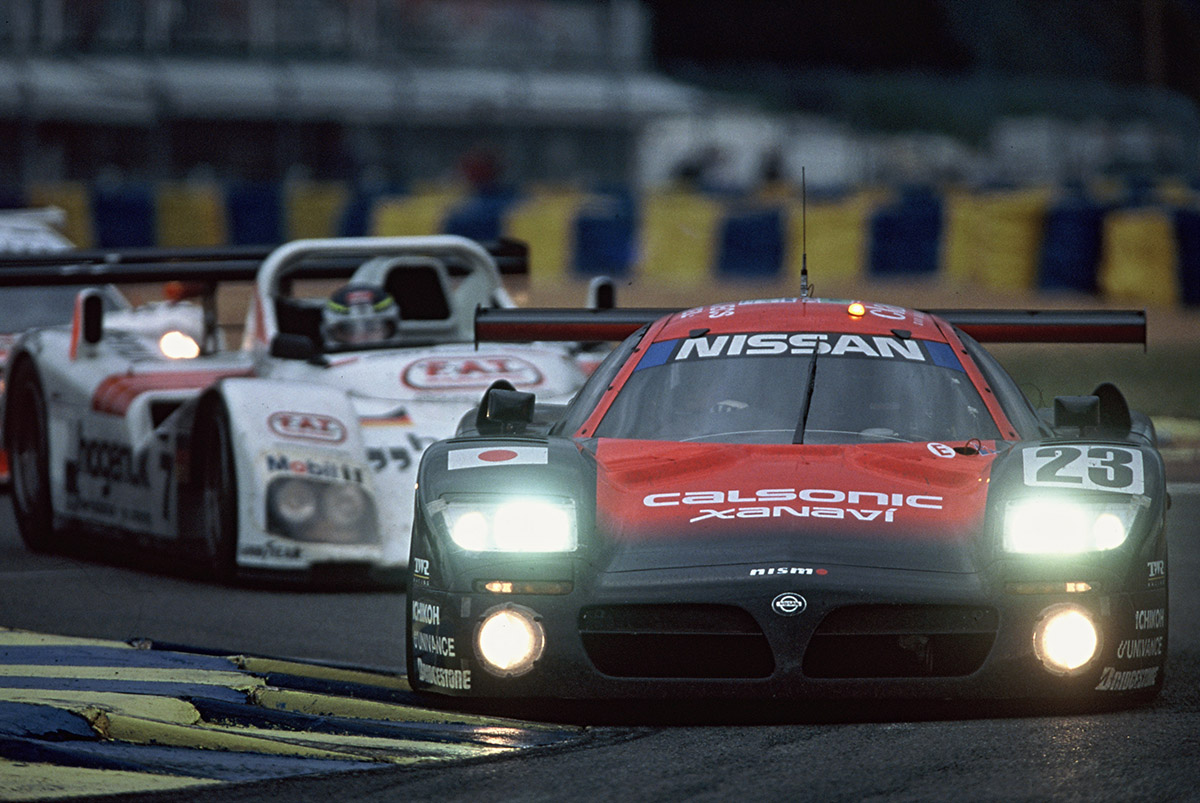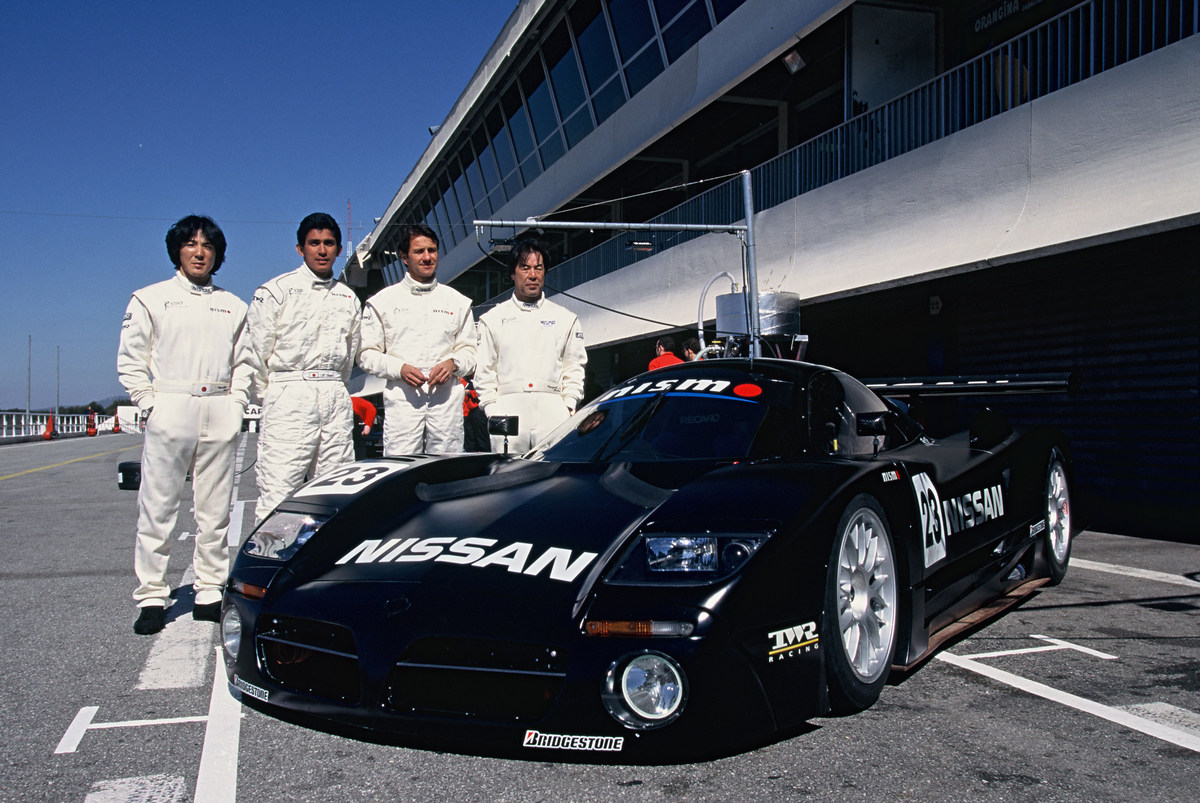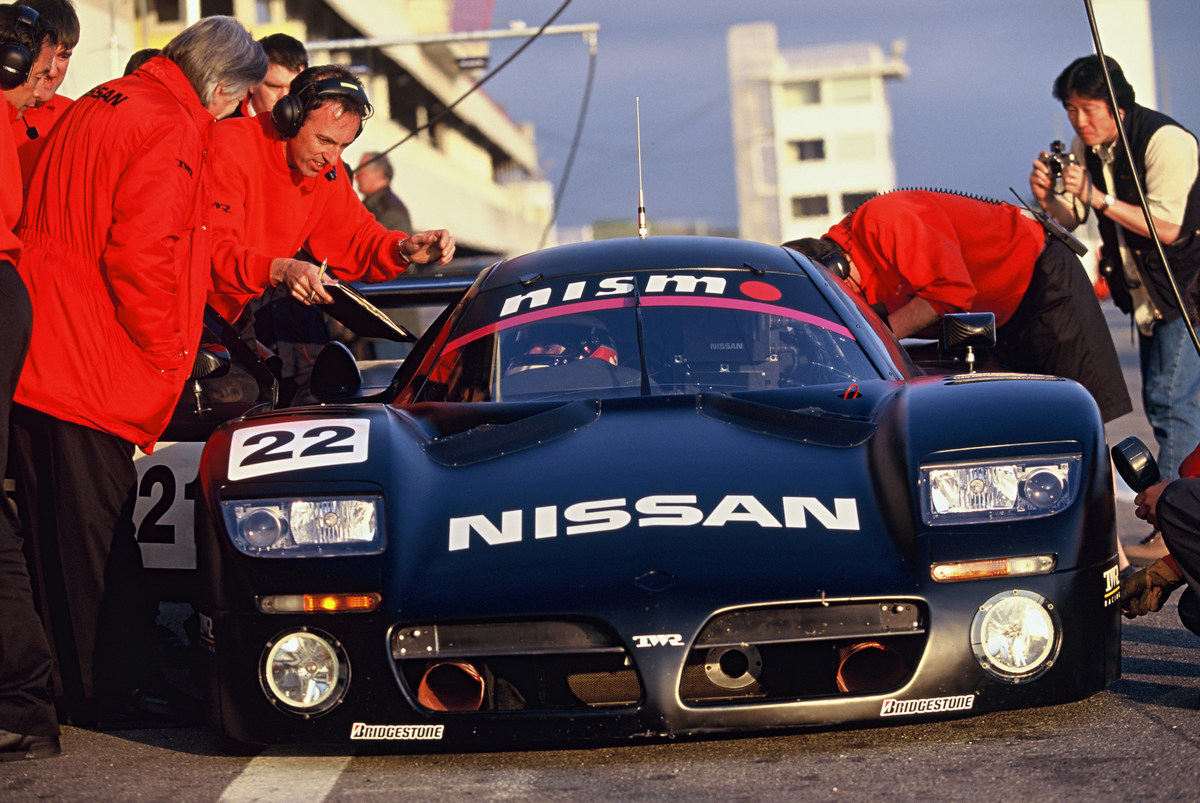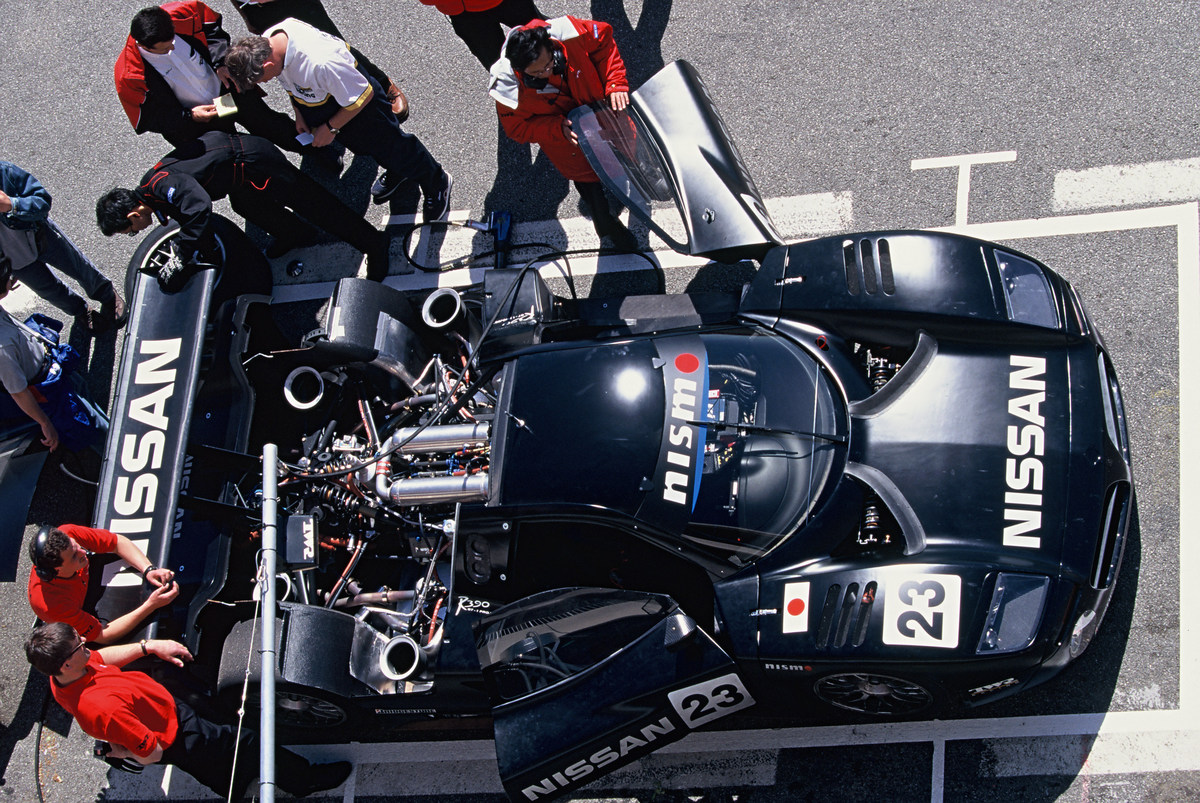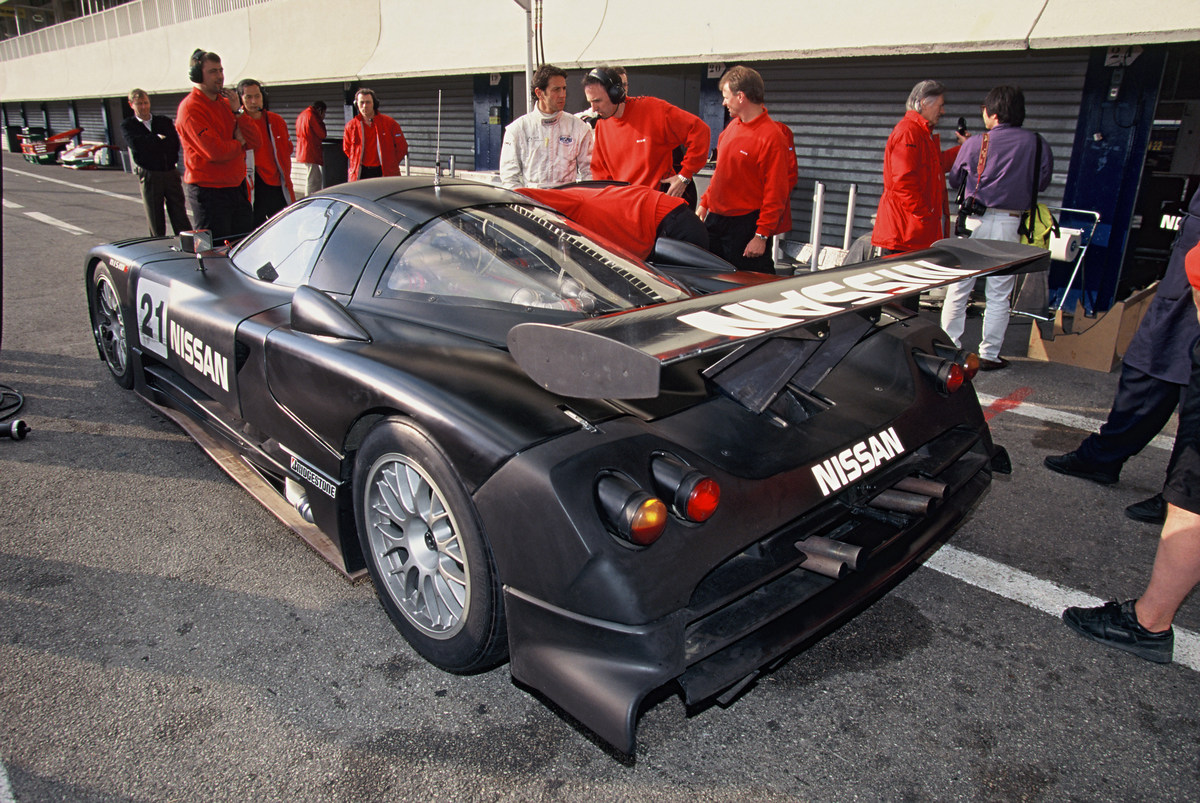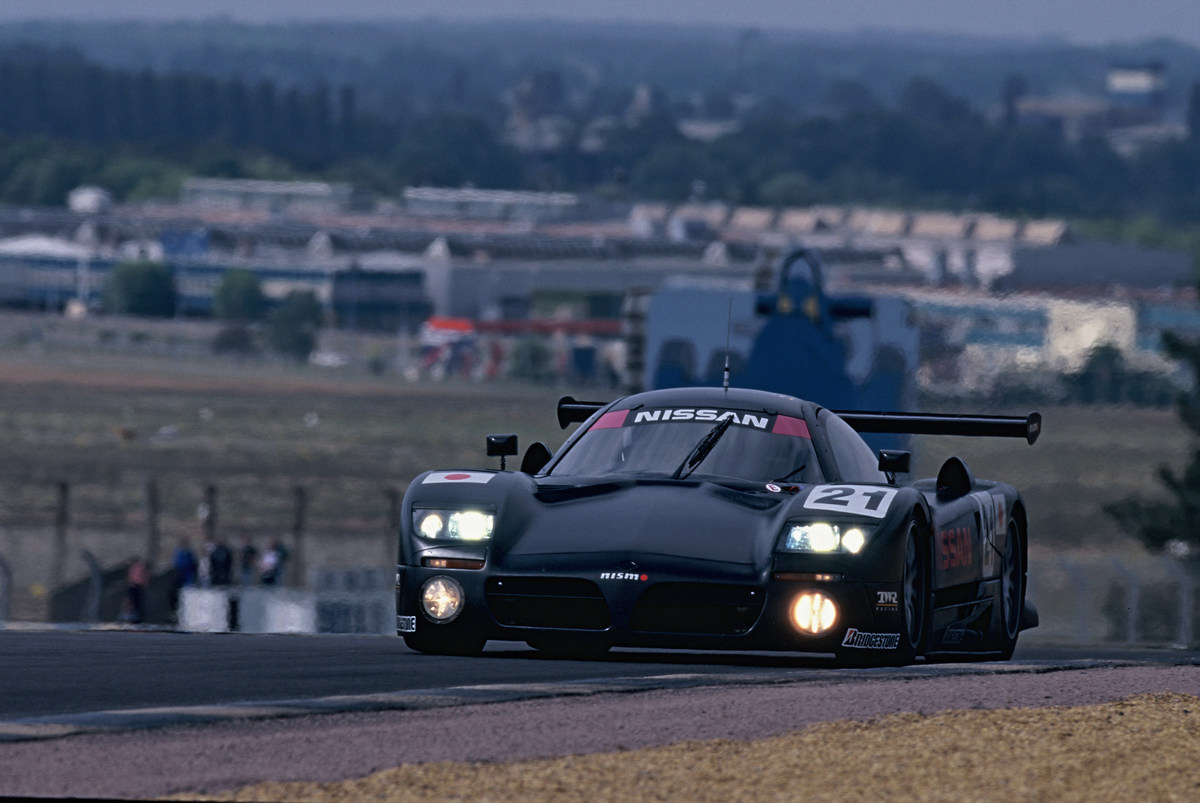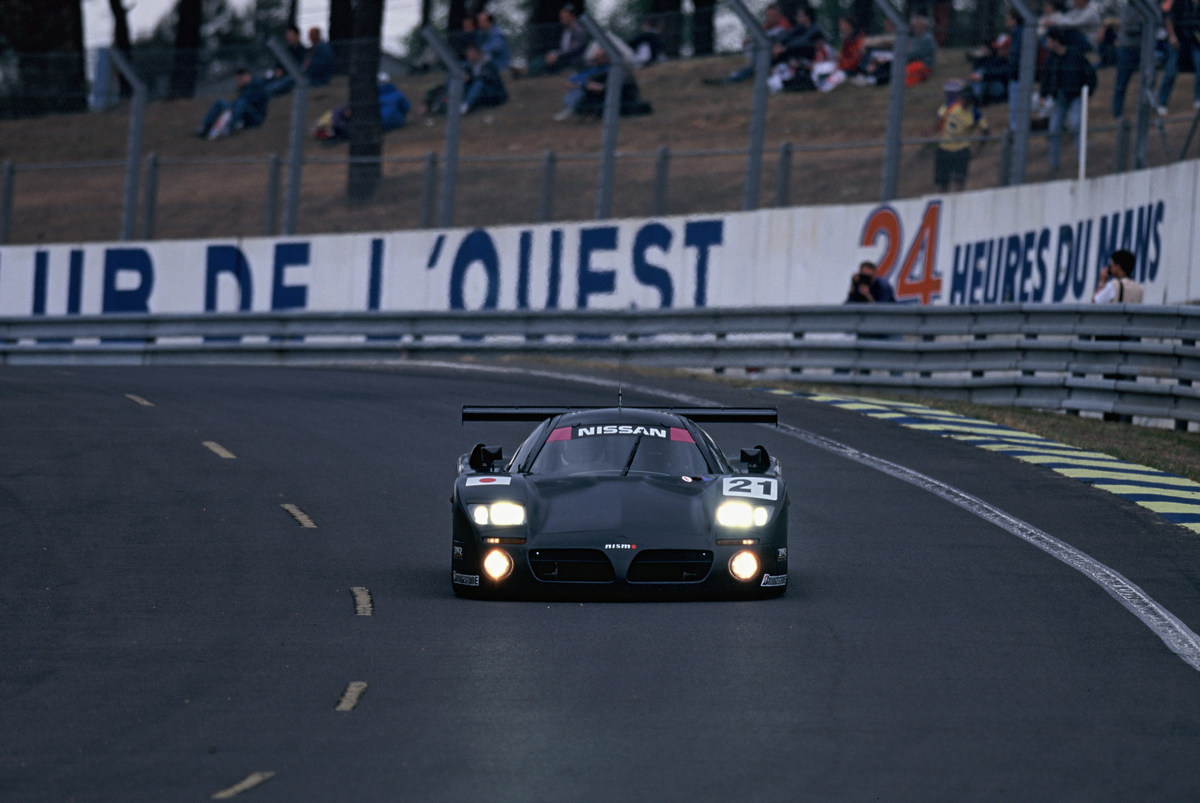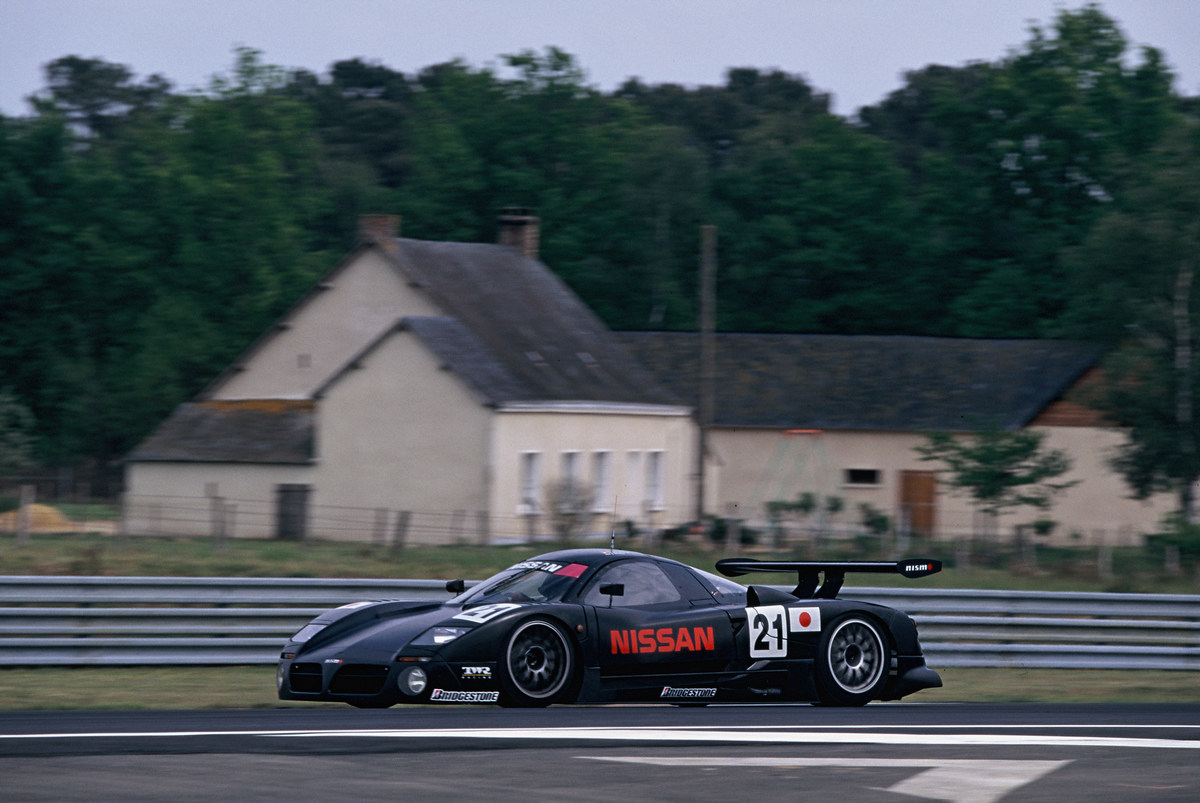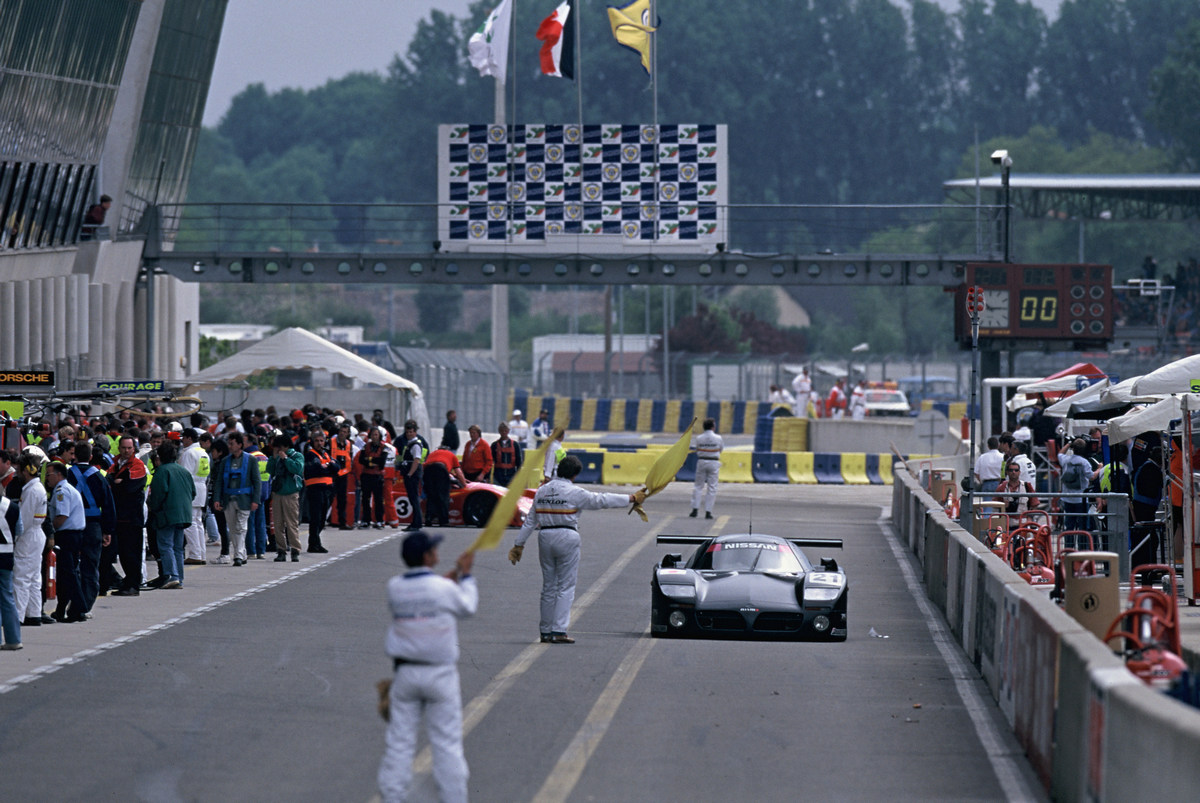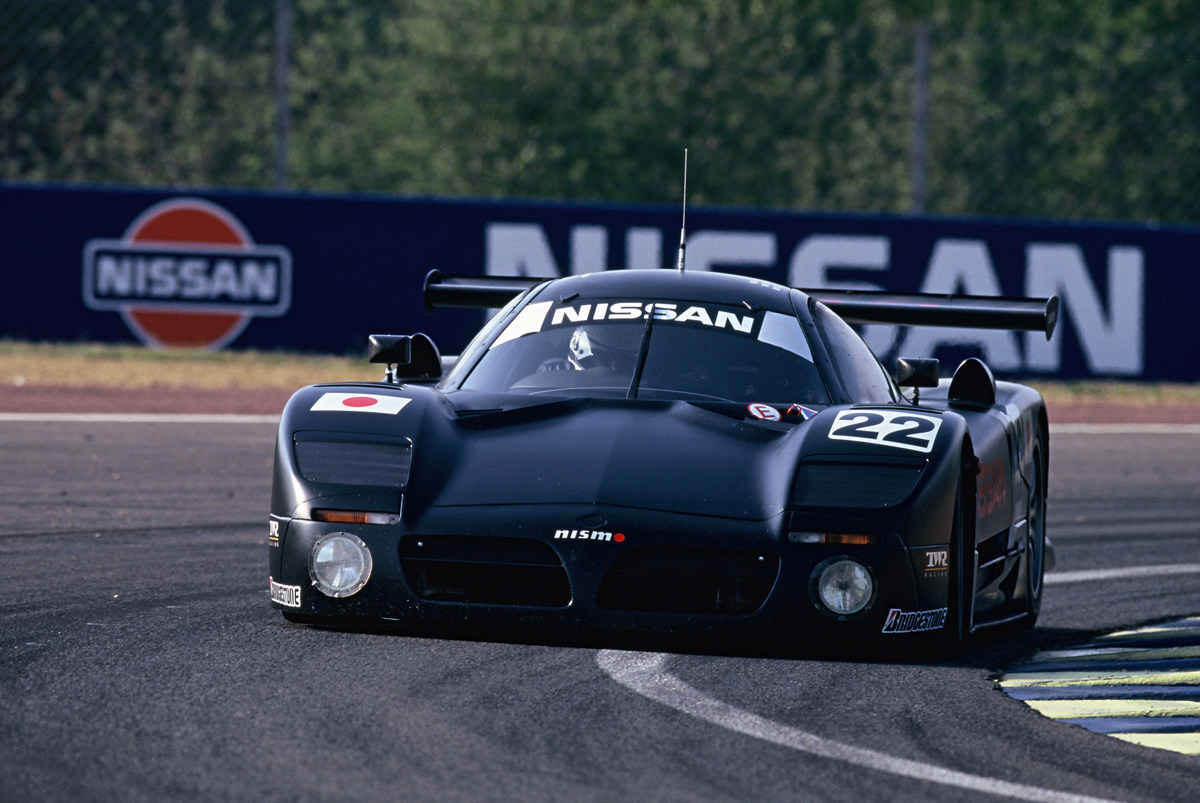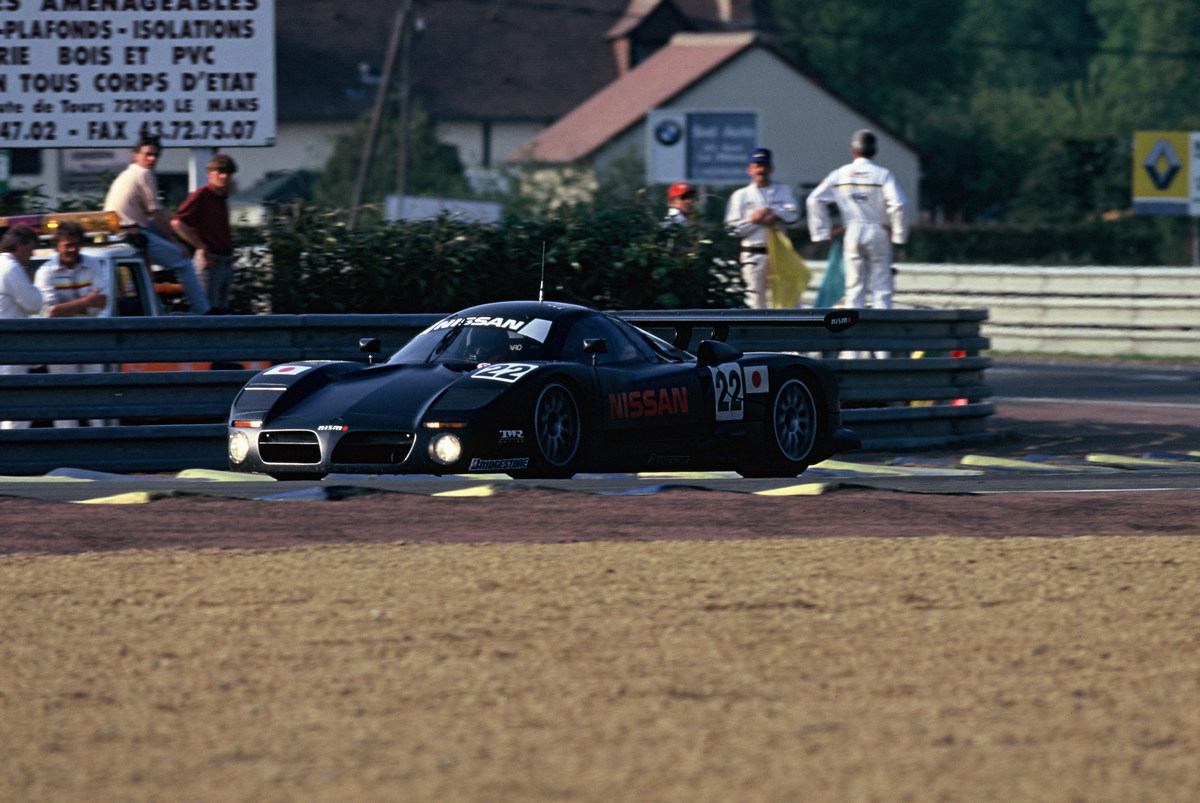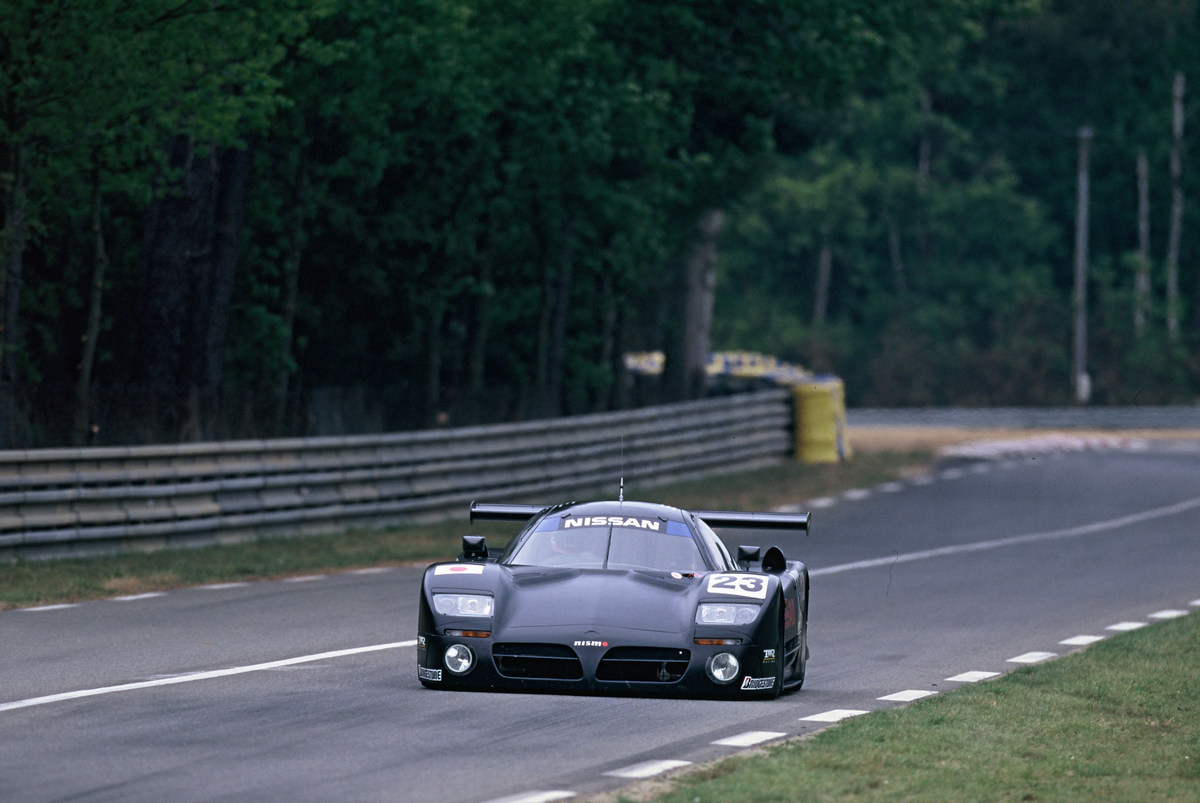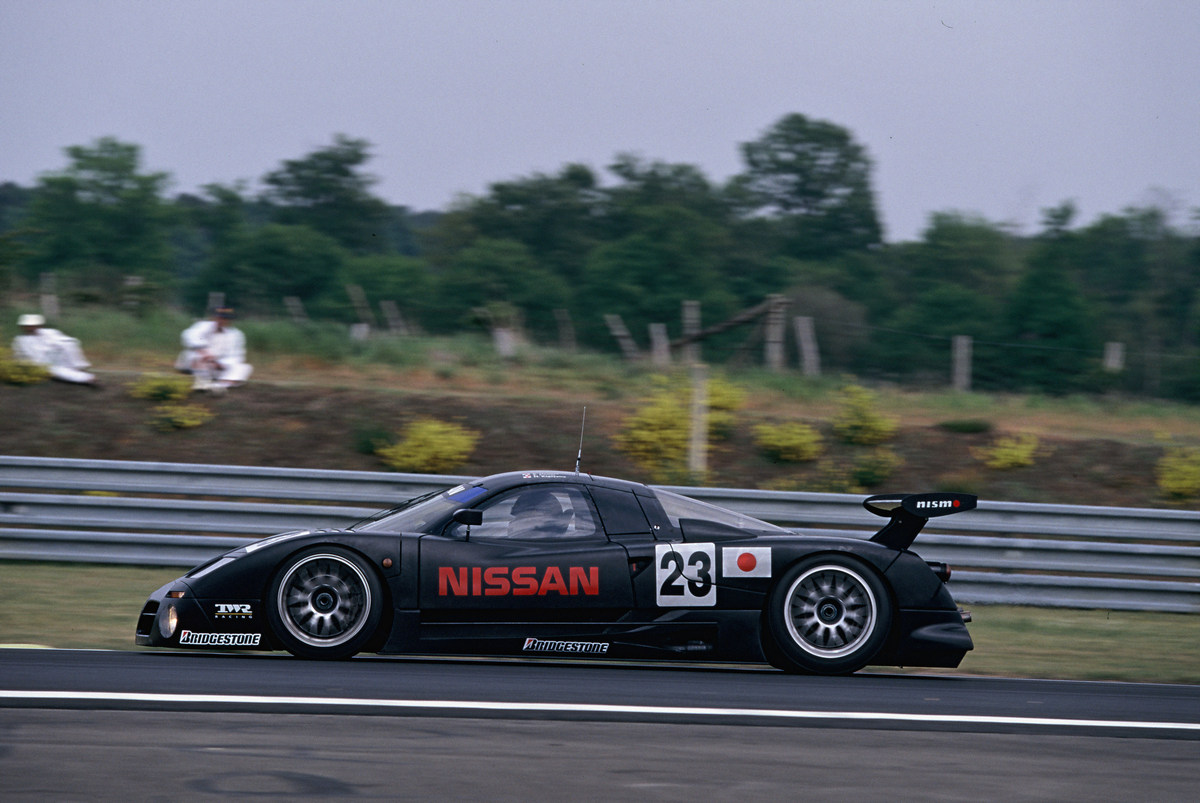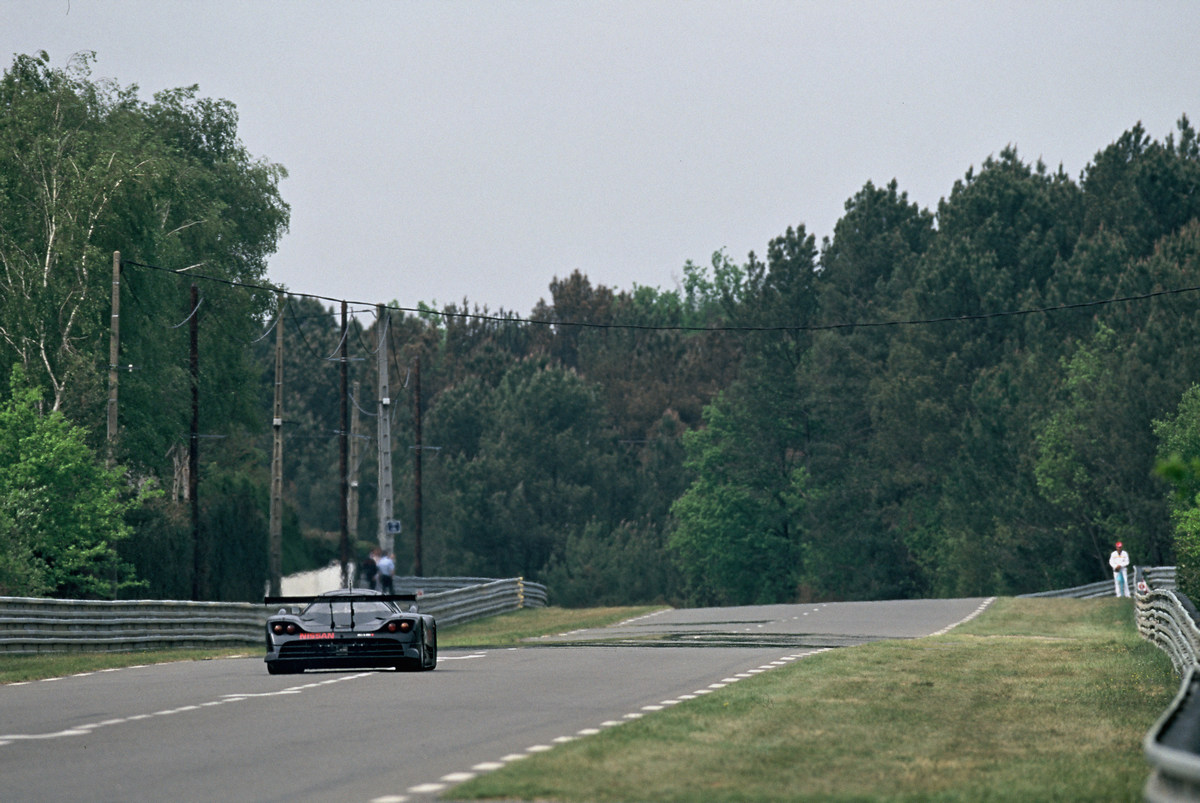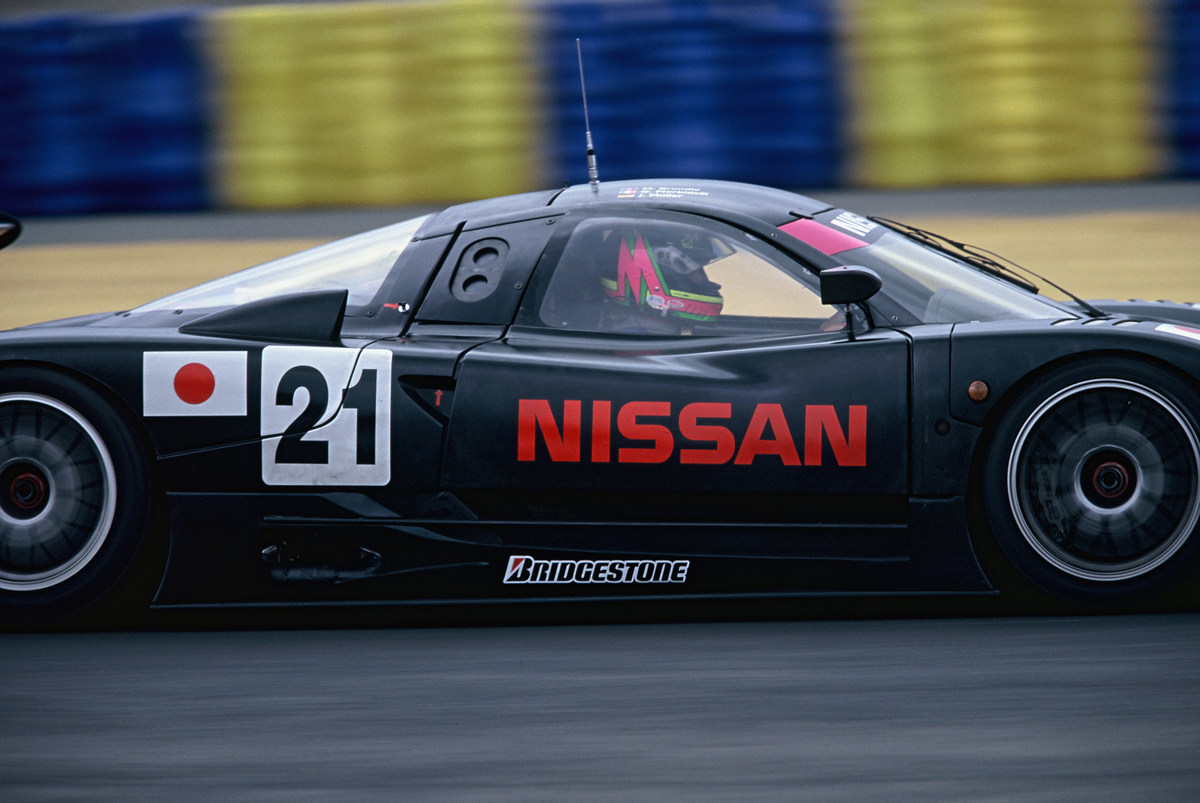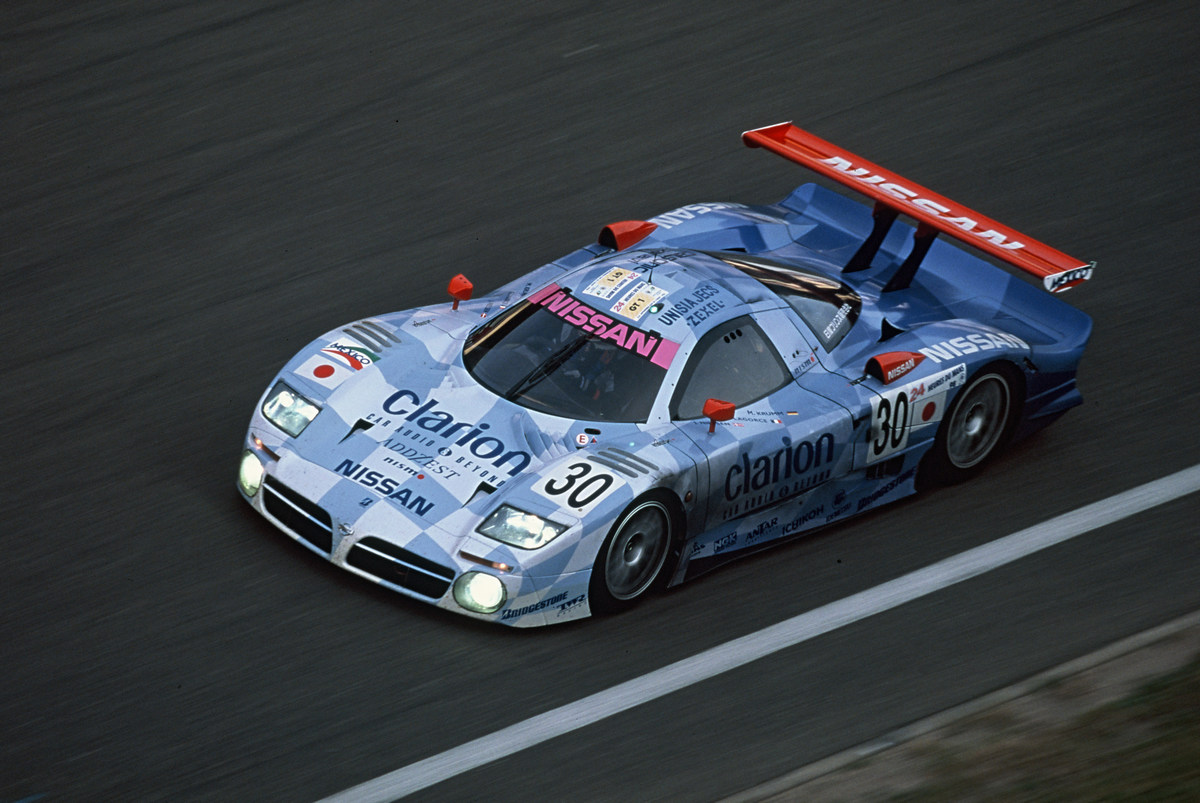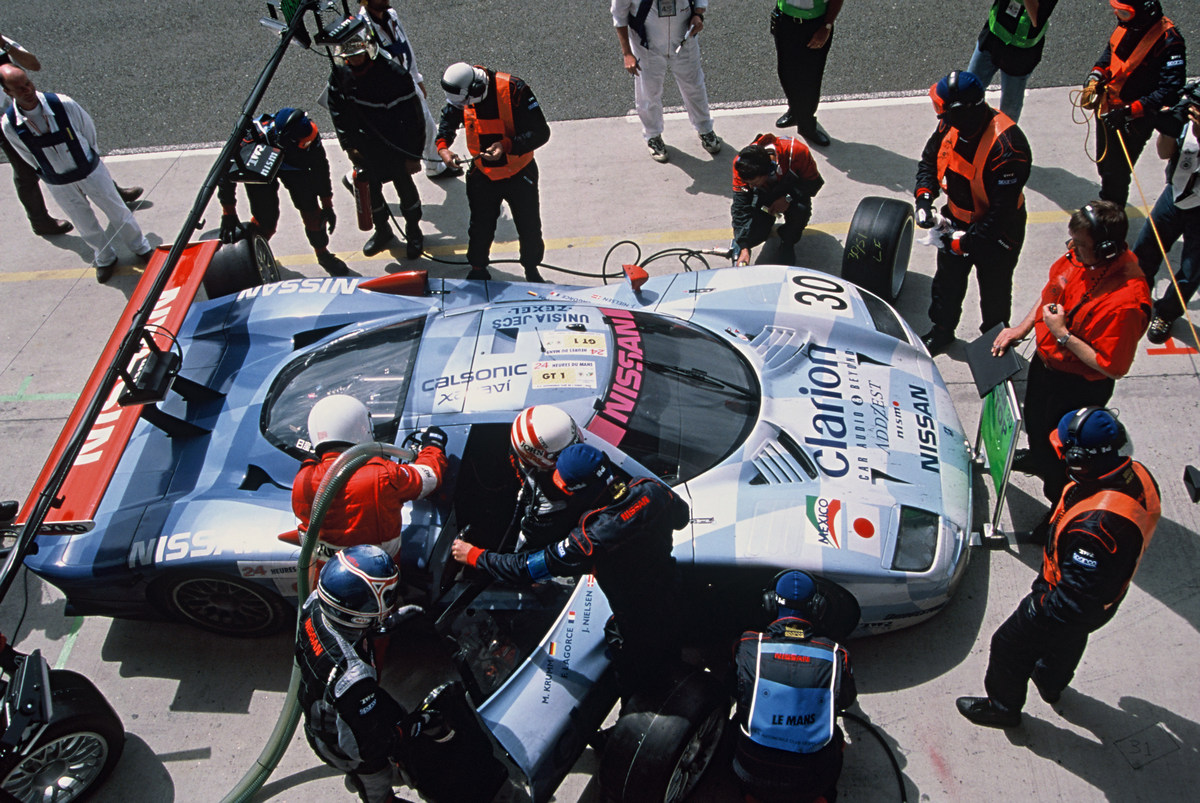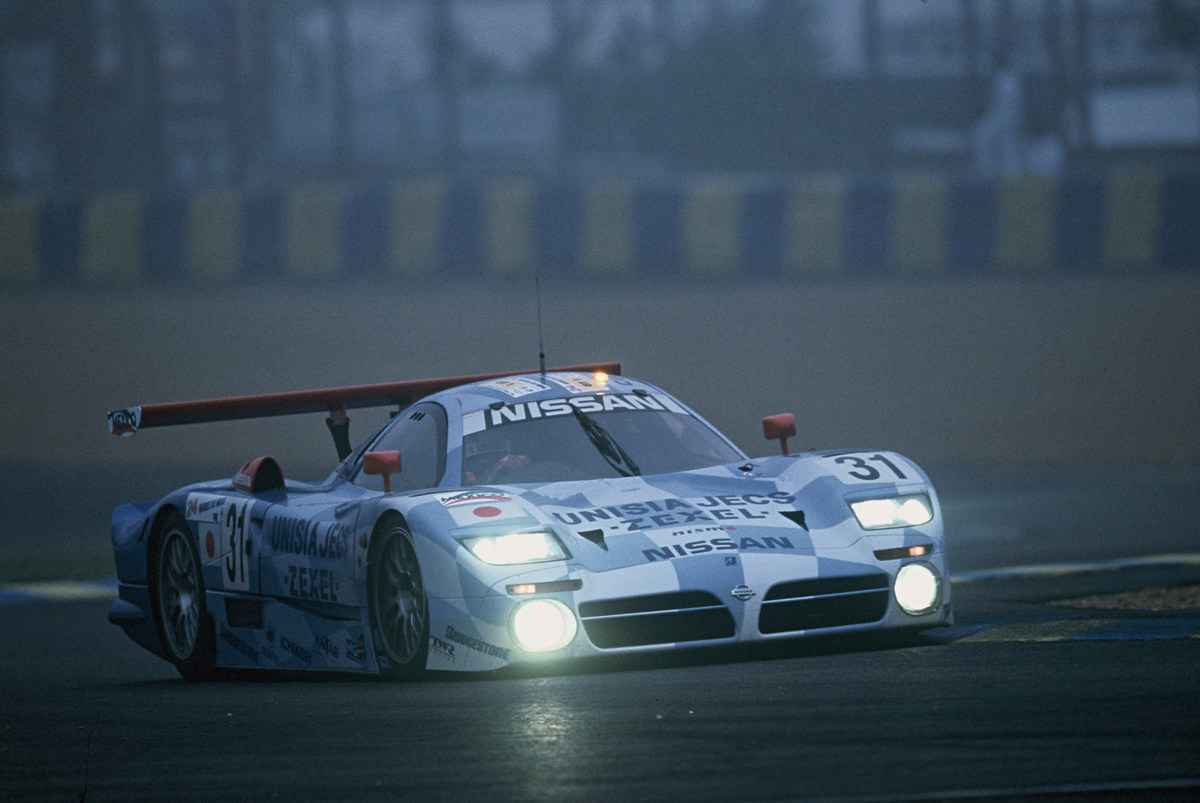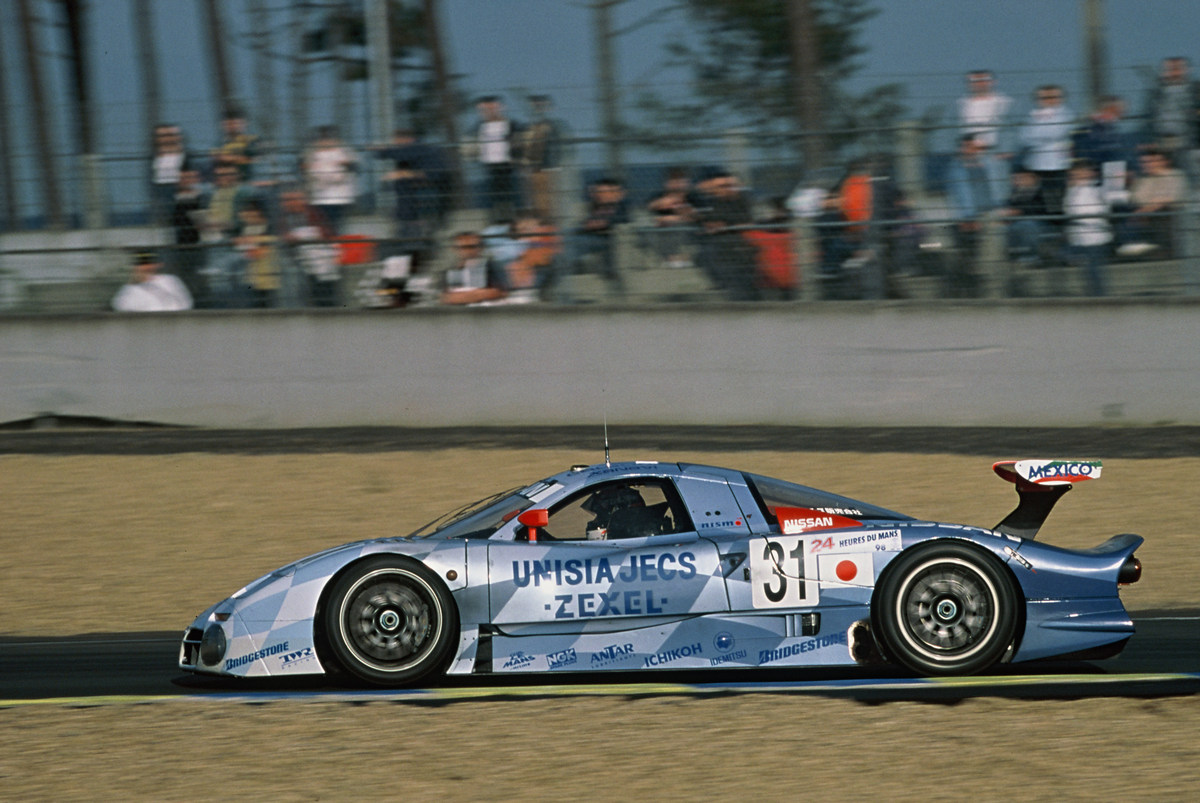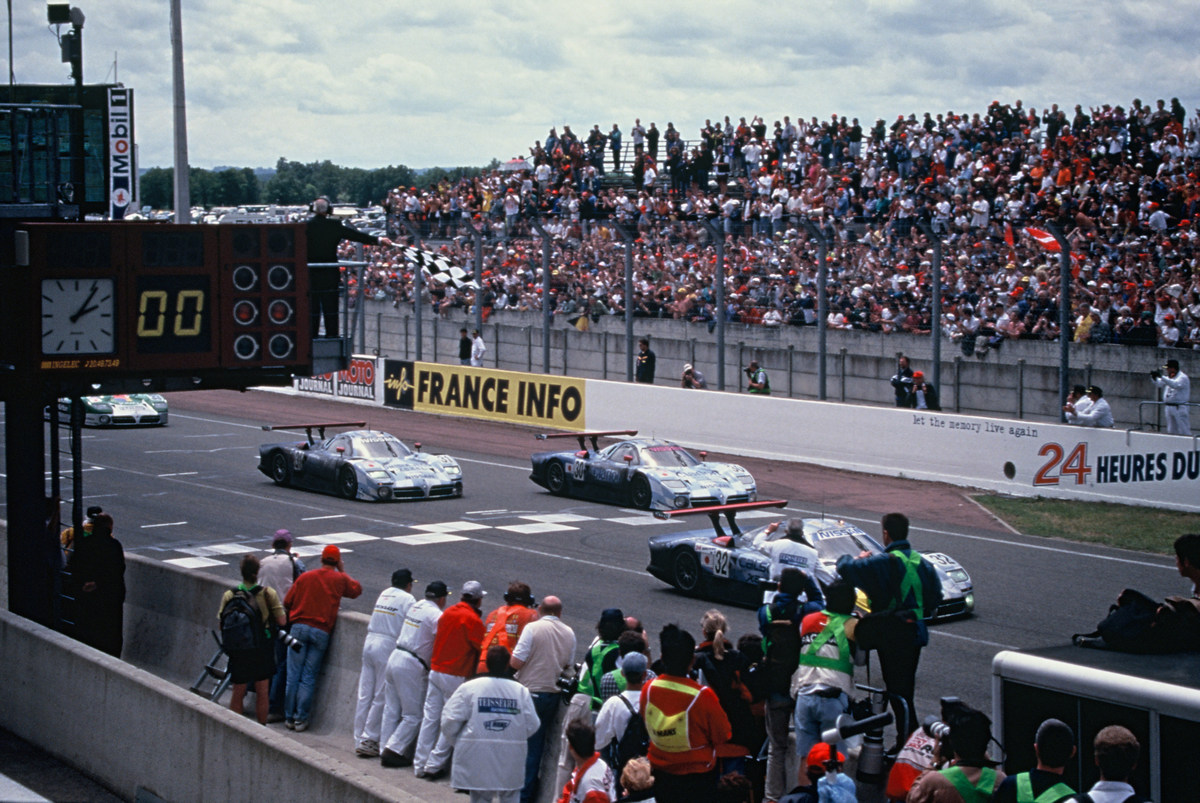The Nissan GT-R is an impressive and very fast car. But it is not the fastest car made by Nissan, that honor goes to a machine built almost twenty years ago.
It all started with the BPR Global GT Series, an international endurance racing series for mostly privately entered modified road cars ‒ like the Ferrari F40, Lotus Esprit V8, Porsche 911, and the successful McLaren F1. Nissan entered the BPR in 1995 with the Skyline GT-R but the car was not fast enough to battle for wins.
But everything in endurance racing changed when in 1996 Porsche exploited a loophole in the loosely written regulations and upped the ante. Whereas the regulations stated that the race car must be based on model that can be driven on public, Porsche turned the regulations upside down: instead of modifying of one of their road going models, they came with a purpose-built race car which was followed by a street-legal version that was offered for sale. In other words, Porsche had built a racing car first ‒ the Porsche 911 GT1 ‒ and derived the road car from it.
Not everyone was happy with the 911 GT1. It was argued that the car was not in the spirit of the regulations, after all the principle behind GT racing was to take road cars and adapt them to race. But more important the arrival of the new Porsche meant that cars like the Nissan Skyline GT-R were rendered obsolete and the manufacturers were forced back to the drawing board.
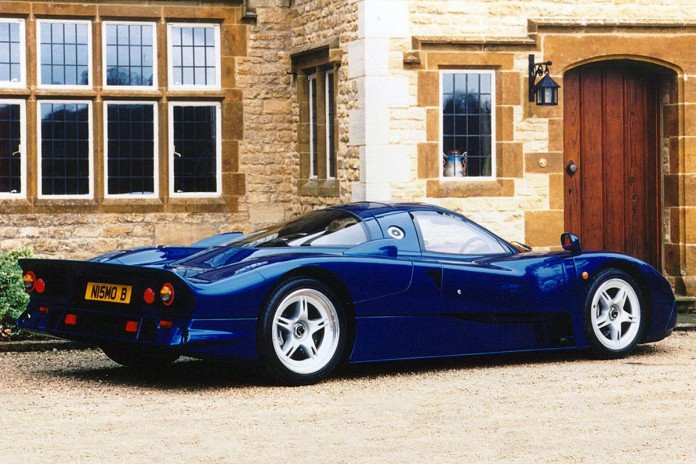 So Nissan started working on a new car that would take on the competition at Le Mans: the R390 GT1. Unlike Porsche (and also Mercedes-Benz with their CLK-GTR), Nissan followed the spirit of the regulations by building the road car first and then the racing version. The name R390 was a reference to the Nissan R380, a racing car from the Sixties. Contrary to Porsche and Mercedes-Benz, Nissan didn’t plan to enter other GT1 races, the Japanese were only interested in the prestigious 24 Hours of Le Mans.
So Nissan started working on a new car that would take on the competition at Le Mans: the R390 GT1. Unlike Porsche (and also Mercedes-Benz with their CLK-GTR), Nissan followed the spirit of the regulations by building the road car first and then the racing version. The name R390 was a reference to the Nissan R380, a racing car from the Sixties. Contrary to Porsche and Mercedes-Benz, Nissan didn’t plan to enter other GT1 races, the Japanese were only interested in the prestigious 24 Hours of Le Mans.
Nissan’s racing department, Nismo, teamed up with Tom Walkinshaw Racing (TWR), who had won Le Mans in 1988 and 1990 with the Jaguar XJR-9. Development of the new Nissan was led by Tony Southgate, who had designed the Le Mans winning Jaguars, but he was also responsible for the Ford RS200 Group B rally car and worked in Formula One for over twenty years.
There was some discussion between Nismo and TWR about which engine would power the R390. The iron cast 2.6-liter inline-6 engine used in the Skyline GT-R was deemed to heavy and had a high center of gravity. So they opted to upgrade the VRH engine used in the Nissan R89C ‒ a Group C race car from 1989. This twin-turbocharged 3.5-liter V8 made from aluminium would provide 641 horsepower at 6800 rpm, paired with a six-speed sequential manual. With this engine and the monocoque chassis the rear-wheel powered Nissan weighed just over 1000 kg.
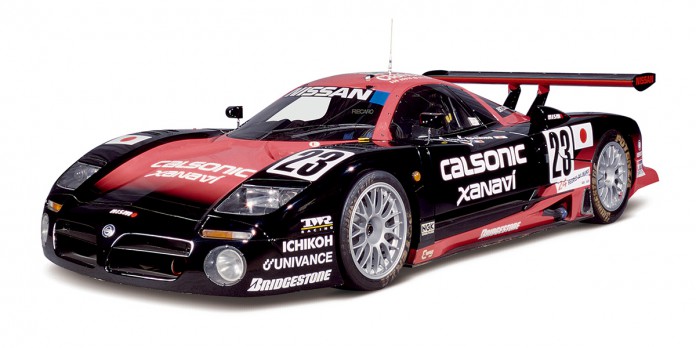 The styling of the mid-engined car was done by Ian Cullum, who was partially responsible for designing the Aston Martin DB7. To keep the design of the Nissan R390 in line with other cars from the Japanese company, the car featured a twin front grille and the headlights were taken from the Nissan 300ZX. The R390 also showed some resemblance with the Jaguar XJR-15, which is no coincidence as both cars were developed by TWR.
The styling of the mid-engined car was done by Ian Cullum, who was partially responsible for designing the Aston Martin DB7. To keep the design of the Nissan R390 in line with other cars from the Japanese company, the car featured a twin front grille and the headlights were taken from the Nissan 300ZX. The R390 also showed some resemblance with the Jaguar XJR-15, which is no coincidence as both cars were developed by TWR.
Because the engine was already available, building the first prototype of the Nissan R390 was achieved in a small amount of time in England. The road car would be built and tested at the Nissan Technical Center in Atsugi, Japan. The road car’s engine was detuned to 550 horsepower, which would allow the car to sprint to 100km/h in 3.3 seconds, while its top speed was 354 km/h. At the time of its unveiling, the Nissan R390 was the third fastest car ever made, only the McLaren F1 with its top speed of 356 km/h (restricted by the rev limiter) or 391 km/h (without the limiter) and the TVR Speed 12 with 386 km/h, were faster. And to this day the R390 GT1 is the fastest Japanese production car ever made.
Nissan offered the R390 GT1 for sale for a symbolic $1,000,000, but it was never seriously intended to be sold as it only served as their entry ticket to Le Mans. Eventually only two street versions of the R390 GT1 were made, both blue in color. The first one was initially painted red, but repainted in blue when its rear side was changed. Nissan put one of these cars into storage at their Zama storage facility in Kanagawa, Japan. The other R390 GT1 was sold for an unknown amount of money at an unknown collector in England.
Three R390 GT1s made their appearance at the 24 Hours of Le Mans in 1997. The black and red cars were fastest in pre-qualifying, Martin Brundle drove the Nissan around the 13.6 km long track in 3:43.15. But their chances to win the race were significantly reduced when the cars failed to pass scrutineering.
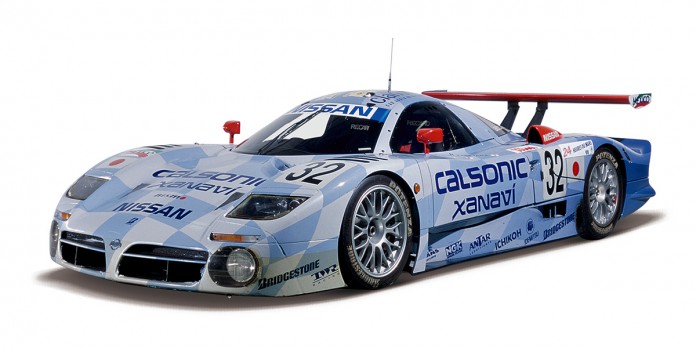 Strange as it may seem, the French officials deemed the luggage space of the R390 illegal. After all, the race car must be based on road going model and since these come with luggage space, the race cars should come with luggage space as well ‒ or at least something that would resemble it. Apparently the TWR and Nissan interpreted the rules a bit different than the officials (although some sources claim that this decision was political as Alain Bertaut, President of the Stewards of the Meeting, had a few disagreements with TWR before). In order to comply with the rules and being allowed to start, Nissan was forced to make some modifications that would eventually affect their pace and reliability.
Strange as it may seem, the French officials deemed the luggage space of the R390 illegal. After all, the race car must be based on road going model and since these come with luggage space, the race cars should come with luggage space as well ‒ or at least something that would resemble it. Apparently the TWR and Nissan interpreted the rules a bit different than the officials (although some sources claim that this decision was political as Alain Bertaut, President of the Stewards of the Meeting, had a few disagreements with TWR before). In order to comply with the rules and being allowed to start, Nissan was forced to make some modifications that would eventually affect their pace and reliability.
After the qualifying, the three R390s occupied the 3rd, 7th, and 14th position on the starting grid. Overheating of the gearboxes plagued the Nissans during the race, two R390s were forced to retire in the early morning while the third car finished twelfth ‒ 67 laps behind the winning TWR Porsche WSC-95.
The following year Nissan returned to Circuit de la Sarthe with four slightly improved R390s. The team was better prepared, the rear of the car was redesigned and now featured a new wing and diffuser. The transmission and brakes were upgraded as well.
The long-tail version of the R390 was tested thoroughly and this time Nissan aimed to win. But the competition was strong, in qualifying the Japanese cars were outpaced by two Mercedes-Benz CLK-LMs, three Toyota GT-Ones, two Porsche 911 GT1-98s, a BMW V12 LM, and a Porsche LMP1/98. So the Nissan started the 24-hour race from 10th, 13th, 14th and 19th position. But the race was long, and the Nissans had proven their reliability in testing. Unlike the faster cars from Mercedes, Toyota, and BMW, all four Nissans made it to the chequered flag, and came in 3rd, 5th, 6th and 10th ‒ only to be beaten by the two Porsche 911 GT1-98s.
But its second race was also the last race for the Nissan R390. After 1998, the GT1 class was canceled because of a lack of interested manufacturers and private teams. It had become far too expensive (and the fact that Mercedes, with the sole exception of Le Mans, absolutely dominated the GT1 class the previous season didn’t help either). Eventually McLaren bought the rights of the engine and from the MP4-12C to the P1, all of them are powered by a V8 based on the one that originally was used in the Nissan Nissan R89C and R390.
In total only ten Nissan R390s were built ‒ eight for Le Mans and only two for the road. Not only is the Nissan R390 still the fastest factory-built car from Japan, it is also one of the rarest and arguably one of the most underrated. Chances are slim you will ever see a Nissan R390, which is a shame, because this amazing car surely deserves more attention and recognition.
[youtube]https://www.youtube.com/watch?v=wfZQ5-dRtNs[/youtube]

